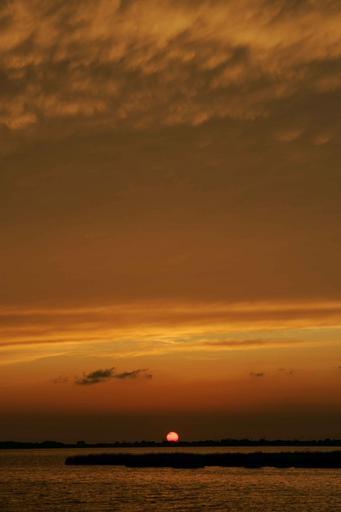Introduction
In the world of photography, there's a distinct appeal to faceless pictures. They frequently evoke a sense of secret and depth that conventional pictures might not communicate. This post looks into the art of producing stunning faceless portraits using textures and layers, focusing on strategies that boost the visual experience. Whether you're an aspiring professional photographer or a seasoned artist, comprehending how to control textures and layers can raise your work to new heights. Let's start this journey to explore the captivating world of faceless self-portraits.
Using Textures and Layers for Stunning Faceless Portraits
Textures and layers serve as the foundation of faceless picture photography. By integrating numerous textures-- like fabric, nature, or perhaps digital overlays-- you can produce an interesting backdrop that draws attention far from the face while still conveying emotion and narrative through other visual elements. Furthermore, layering these textures allows you to produce depth in your images, making them aesthetically engaging.
When we talk about "faceless self-portraits," we are referring to a style where the topic's identity is obscured or totally gotten rid of from view. This type of expression offers an empowering medium to check out one's inner sensations without the restraints of recognizable functions. In this area, we will discuss how textures can be used successfully in your photography.
1. Comprehending Textures in Photography
To produce compelling faceless pictures, one need to initially understand what textures are in photographic terms. Textures can be defined as the surface area quality of a things that can be seen or felt. In photography, textures add an additional layer of intricacy to images by introducing patterns, contrasts, and tactile dimensions.
1.1 The Importance of Textures
Textures play an important function in enhancing visual interest. They can transform mundane backgrounds into vibrant aspects that match the topic while supporting the general theme of the photograph.

2. Types of Textures for Faceless Portraits
There are countless kinds of textures you can experiment with:
- Natural Textures: Leaves, bark, water surfaces. Fabric Textures: Silks, woolen materials, lace. Architectural Textures: Walls, bricks, metals. Digital Overlays: Patterns produced through graphic design software.
Understanding these different types will open up myriad possibilities for your artwork.
2.1 Developing Your Own Textures
You do not constantly require to count on external sources for textures; creating your own can include an individual touch! Explore fabrics or natural items around you-- take close-up shots that catch their elaborate details.
3. Layering Methods in Photography
Layering is another crucial aspect when discussing "Using Textures and Layers for Sensational Faceless Portraits." By layering various images or textures together within a frame, you create depth and intrigue.
3.1 Layering Basics
Start by picking your base image-- this might be anything from a picturesque landscape to an abstract pattern-- and then overlay it with additional images or textures utilizing photo editing software such as Adobe Photoshop or Lightroom.
3.2 Mixing Modes
Once layers are established, experimenting with mixing modes will allow you to control how they connect with each other aesthetically. For instance:

- Multiply: Darkens the base image. Screen: Lightens the base image. Overlay: Integrates both effects for a richer texture.
Utilizing blending modes https://www.oskuleinonenphotography.com/Wall-Art-On-Canvas/i-qP2XhGp creatively can yield striking results that boost your faceless portraits' visual appeals significantly.
4. Crafting Visual Self-Portrait Photography
Aesthetic self-portrait photography catches not simply an image but likewise emotions-- typically described as contemplative photography-- that welcomes viewers into one's world without revealing facial functions explicitly.
4.1 The Essence of Aesthetic Photography
The term 'visual' refer to beauty stemmed from creative elements-- color combinations, composition styles, etc, which contribute significantly towards creating cohesive visual stories within self-portraits.
5. Emotional Stories Without Faces
Faceless portraits permit artists flexibility in storytelling; feelings communicated through body movement or chosen settings become focal points instead!
5.1 Communicating Feelings through Body Language
Even without showing faces-- the positioning of hands or posture communicates much about mood-- permitting viewers deeper insight into subjects' thoughts while protecting anonymity inherent within "faceless" themes!
FAQ Section
6 FAQs About Using Textures and Layers for Stunning Faceless Portraits
Q1: What is faceless self-portrait photography?
A1: Faceless self-portrait photography describes recording images where the subject's face is obscured or hidden entirely from view; instead concentrating on other components like body movement or environments that communicate emotion.
Q2: How do I choose proper textures?
A2: Selecting textures should align with your desired mood/theme-- natural aspects stimulate tranquility while metropolitan structures might recommend chaos; consider what story you want to tell!
Q3: Can I use stock images for layering?
A3: Absolutely! Stock images provide exceptional resources when trying to find distinct overlays/textures that fit flawlessly into your initial compositions.
Q4: What software is best for modifying layered photos?
A4: Adobe Photoshop stays industry-standard due its extensive capabilities; however options like GIMP offer robust options too if you're seeking totally free solutions!

Q5: How do I maintain consistency throughout my series?
A5: Establishing consistent color palettes & & themes throughout assists merge diverse pieces-- this develops visual harmony across several works showcasing similar aesthetics/ideas!
Q6: Are there any dangers related to heavy layering?
A6: Over-layering may lead pictures feeling cluttered instead of cohesive; hence small amounts becomes important when utilizing numerous aspects together ensuring clarity remains intact!
Conclusion
Creating spectacular faceless pictures utilizing textures and layers is both an art kind and a deeply personal expression capable of stimulating extensive emotions without always displaying facial functions plainly. By mastering methods surrounding texture application together with strategic layer management within structures-- the potential outcomes go beyond mere visuals changing into engaging stories showing numerous human experiences captured magnificently through lens artistry! So why not pick up your cam today? Explore brand-new avenues readily available within aesthetic self-portrait photography while embracing imagination unrestricted by standard norms!
This article serves as a thorough guide on "Using Textures and Layers for Sensational Faceless Pictures," using insights improved by practical examples throughout various areas developed particularly towards boosting reader engagement while cultivating greater understanding within this remarkable realm!